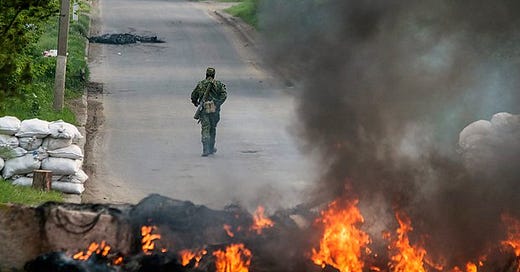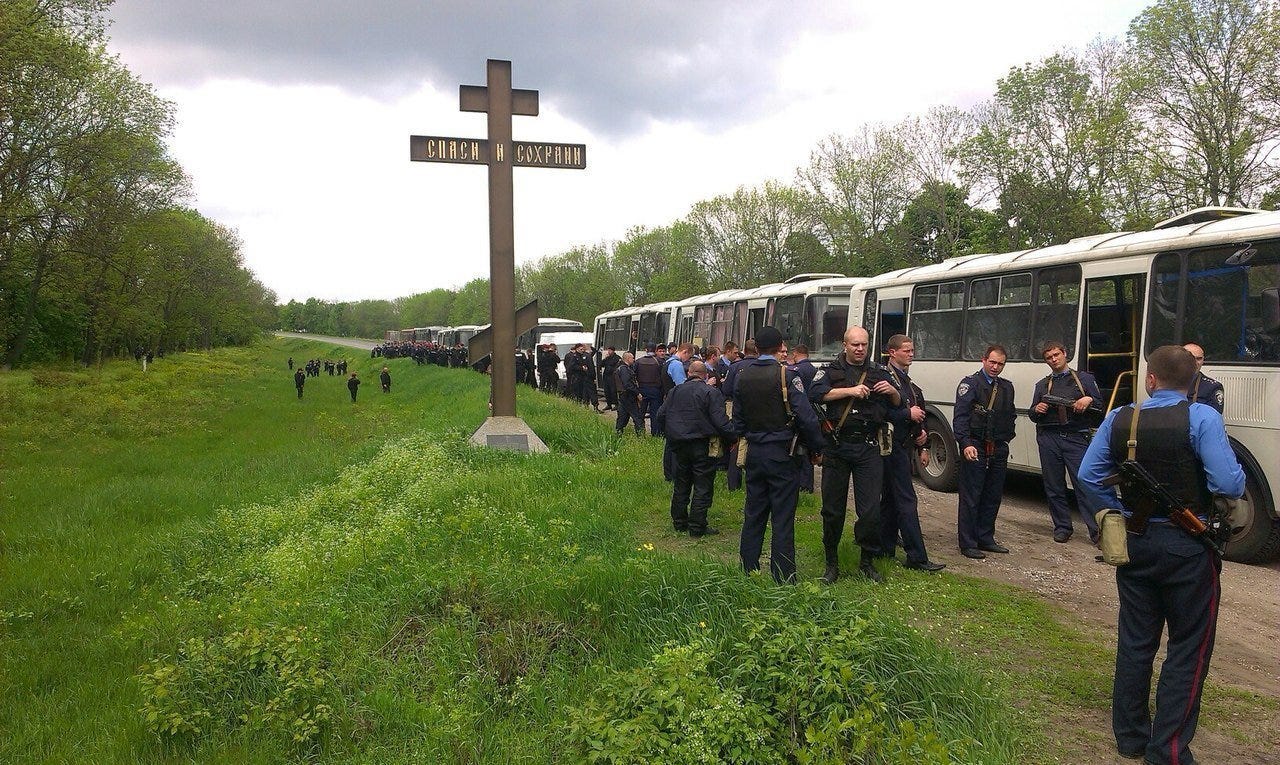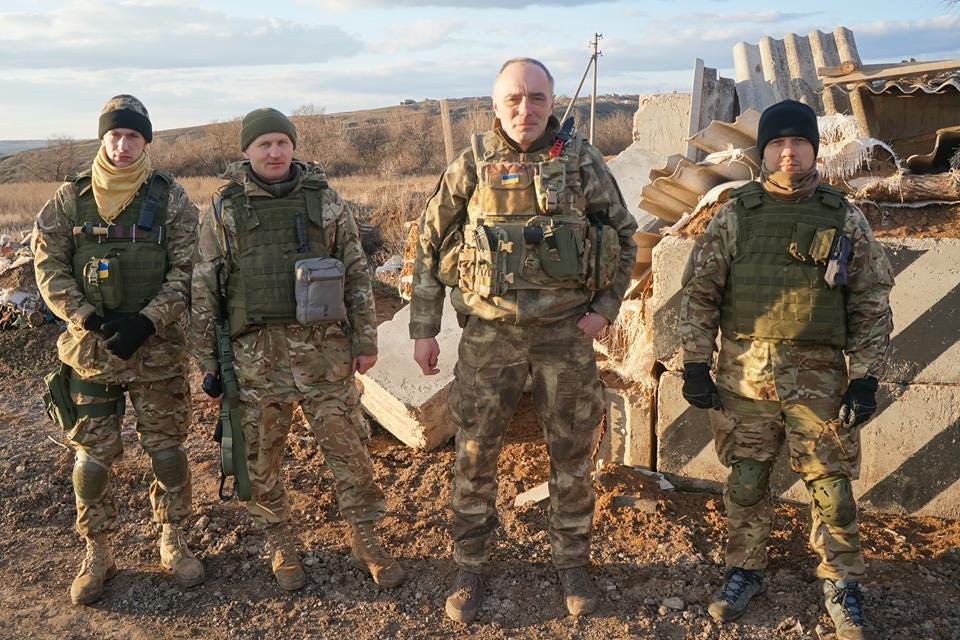The Ukrainian delegation left a recent meeting with their American counterparts having committed unilaterally to move towards a ceasefire. When I read about it, I was instantly reminded of a similar episode from the beginning of the Russo-Ukrainian war. So as this wreck of diplomacy starts gaining traction in the direction of a brickwall, let's explore the last time Ukraine unilaterally agreed to a ceasefire - why it did, how it went, and what we could learn.
12th of April, 2014. As Kyiv was negotiating concessions with the elites of the country’s east, a heavily armed warband of 53 Russian ultranationalists, cossacks, mercenaries, and collaborators headed by FSB Colonel Igor Girkin crosses the border into Ukraine and seizes the key transport hub of Sloviansk. Within the next days, more armed groups establish themselves in several other towns throughout the eastern region of Donbas. This sudden turn of events sends the government into a panicked stupor. Interim President Turchynov entrusts the security services to begin an anti-terrorist operation (ATO) to isolate and destroy the infiltrators. Several hundred policemen, special agents and SWAT-esque operatives are clumsily gathered together and sent to the outskirts of Sloviansk.
The ATO goes off to a bad start. Girkin’s militants kidnap a civilian to seize their vehicle, using which they ambush the gathering government troops. Several operatives are wounded and one killed before the militants scurry back into Sloviansk. For the time being, the demoralised and disorganized security forces limit their presence to a number of scattered checkpoints.
But the militants in Sloviansk are unable to capitalise on the government forces’ inaction. They, after all, number only several hundred, all but the initial 50 of whom are untrained and armed mostly with pistols and hunting rifles. Meanwhile, the city of Sloviansk alone numbered roughly 120,000 residents. Girkin, the militants’ commander, is unable to really establish control of his base city - let alone challenge the government forces. He relays all of this to one of his curators in an April 15 phone call, calling for reinforcements and more heavy weaponry. But for the time being, an uneasy standoff punctuated by scattered skirmishes ensues.
On the 17th, several diplomatic delegations arrive to the Swiss city of Geneva for talks on de-escalating the situation in Donbas. The Ukrainian and Russian delegations are led by the countries’ Foreign Ministers, Andrii Deshytsia and Sergei Lavrov respectively. Also present were delegations from the US and EU to act as mediators. By the end of the day, an agreement to cease fire was hammered out and went into effect the next morning. This ceasefire was mostly observed by the Ukrainian forces. As for the militants, this respite allowed them to solidify control over the areas they held (with threats, kidnappings, and murders of political opponents), receive reinforcements relatively unobstructed, and conduct additional, just scaled down, skirmishing.
This first ceasefire broke down only days after being declared. On the 17th, as the delegations talked in Geneva, Russian militants kidnapped a Horlivka city councillor Volodymyr Rybak. He, along with two Maidan activists, was then delivered to Girkin's headquarters in Sloviansk for torture. After that, approximately on the 19th, they were executed and their bodies were dumped on a nearby riverbank. Fishermen found the bodies on the 22nd.
The Rybak case was unprecedented and scandalous, and showed what awaited more civilians should the militants’ presence continue. Interim President Turchynov soon announced the resumption of the Anti-Terrorist Operation. It would escalate throughout May, as Russian GRU armed and helped form several new paramilitary groups consisting of locals and Russians. On the 26th of May, Petro Poroshenko won the Ukrainian presidency. At his inauguration on 7th of June, he reaffirmed his campaign promise of finding a solution to the conflict as soon as possible, and with as little death as possible.
“I must note that we were trying to avoid fighting in the cities. And I repeated this in front of the Parliament, that I will not allow Sloviansk, Donetsk or any other Ukrainian city to be turned into a smoldering ruin like Grozny”
- Petro Poroshenko, “Sloviansk: Beginning of the War”
Meanwhile, Ukrainian forces launched an operation to take back the border crossings occupied by the militants, through which Russian arms, money, reinforcements, and now tanks were flowing into Ukraine. The intent was to isolate the militants, weakening them militarily and thus also making them more amenable to diplomacy. Even though the operation was having only intermittent successes and causing heavy casualties, the intended pressure was felt by militant commanders. The noose was also tightened around Sloviansk after the Ukrainian forces took a series of small towns and crucial bridges north of the city.
On the 20th of June, President Poroshenko ordered the armed forces to cease fire and operations for a period of a week. On the 22nd, a Ukrainian delegation arrived to Donetsk and a very lenient deal was presented to the militant leadership. It included amnesties for those who did not commit any major crimes and an escape corridor to Russia for those who did. Later on, Poroshenko would call this a naive decision that he regrets heavily. Western pressure to finally find a peaceful settlement, a constant since the Maidan, also played a very large role in Poroshenko's decisionmaking here.
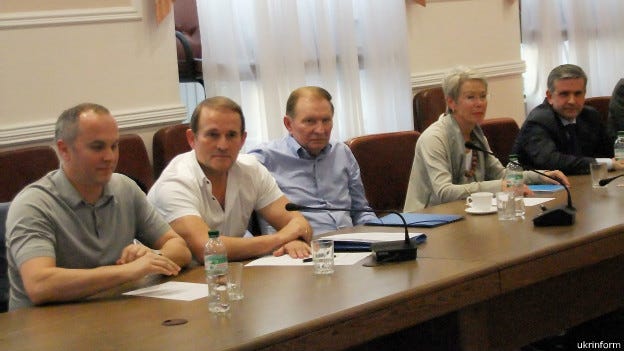
It was intended that the militants would, at least, join Poroshenko’s unilateral ceasefire as a diplomatic gesture. They did not. The paused and incomplete Ukrainian operations on the border and around Sloviansk allowed the militants to take back the initiative, attacking Ukrainian-held border crossings and securing supply routes to their major strongholds. Russia intensified its effort to arm the militants to the teeth by sending even more arms and armored vehicles across the border. A Ukrainian military helicopter carrying SBU engineers was shot down on the 24th, killing 7, as the skirmishing around Sloviansk intensified.
On the 26th, two recently received militant tanks rolled down a hill towards one of the weaker Ukrainian checkpoints near Sloviansk. They first destroyed the garrison’s own armor and anti-tank systems, before relentlessly shelling the soldiers themselves. This ambush cost the lives of 4 Ukrainian soldiers and left 5 more injured. This attack in particular intensified the ire directed at Poroshenko.
“Because initially the operation was planned as an anti-terrorist one, nobody was ready to repel tank attacks. [...] That tanks arrived to Sloviansk was clear since a week earlier. First only two were spotted, but more arrived later on. How they got into a “surrounded” city is a whole other discussion. [...] It was clear that there was no reconnaissance being performed, and the unilateral ceasefire didn't even allow us to destroy enemy armor [if spotted].”
- Yuri Kasianov, activist and journalist
On the 27th, Poroshenko arrived in Brussels to finally sign an association agreement with the European Union. It was also the day that the ceasefire was set to expire. Poroshenko faced immense pressure from the EU diplomats to prolong it and restart negotiations. According to Poroshenko, some even tied the prolonging of this unilateral ceasefire to the signing of the association agreement. Having little other choice, Poroshenko announced that the ceasefire was extended by another three days until the 30th as a “gesture of good will.”
This extension saw more of the same. On the 29th, the militants even released a video of themselves shelling Ukrainian positions. Finally on the 1st of July, this much maligned, stillborn joke of a ceasefire ended, proving nothing but the uselessness and intense harmfulness of a ceasefire with a side that is not signaling any genuine interest in it. In his own words, Poroshenko realised that he will not achieve peace in the Donbas by way of diplomacy and negotiation.
“And from the first of July the ceasefire was over. I swore to myself that I will not keep our troops under fire without them being able to hit back for a moment longer. Because everyone knows how that ended. None of them ever intended to order a ceasefire on their end. They only used this time to bring in more arms, mercenaries, and instructors from the Russian Federation.”
- Petro Poroshenko, “Sloviansk: Beginning of the War”
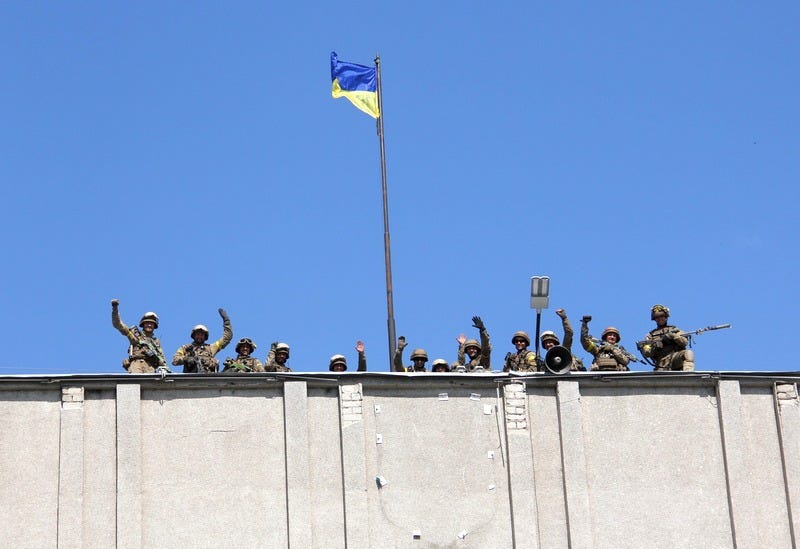
****
Thank you for reading! If you wish to support my efforts at spreading education and awareness about the early part of this war, which for the vast majority of people is a blur at best, please consider sharing this and supporting me on Buymeacoffee. You can also follow me on BlueSky where I often post or write short threads on this topic.


